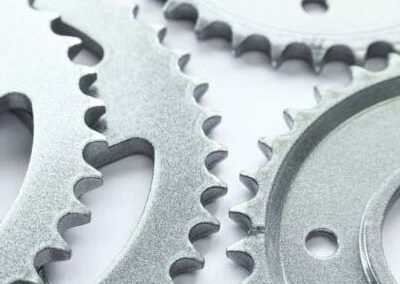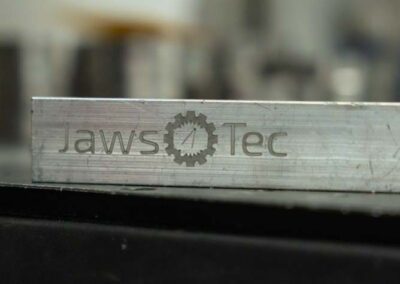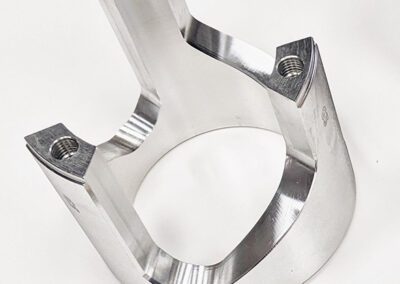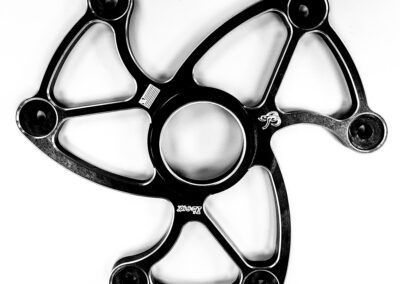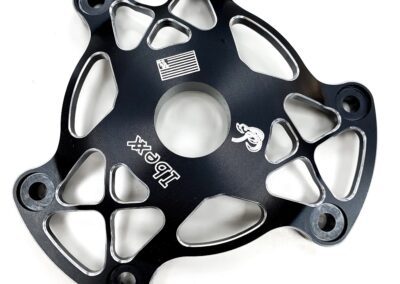CNC turning service
Computer Numerical Controlled milling processes allow you to create your parts with maximum design flexibility, precision, and accuracy.
What is CNC turning?
CNC Turning processes work by stabilizing a block of material to a base. The material is then cut away with a cutting tool, which makes CNC turning a subtractive process, rather than additive like 3D printing.
Producing your parts on CNC lathes is a cost-effective way to acquire custom pieces for any project. CNC turning can be done on many types of hard materials, including hard plastics and metals.
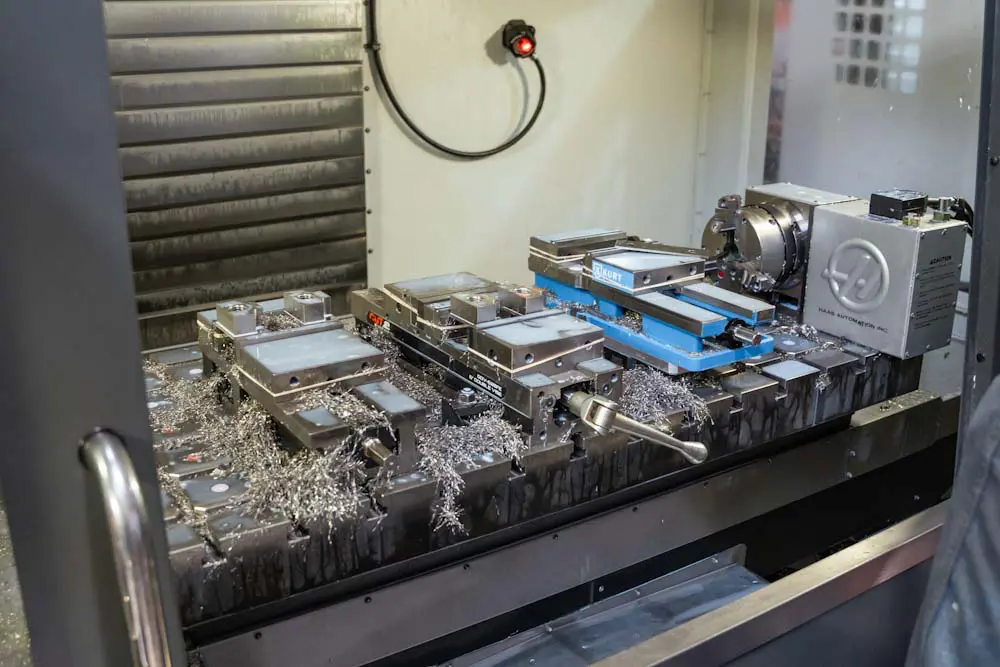
Maximum measurements
Each CNC machine has unique specifications and capabilities
HAAS ST-30
Part size limitations |
Metric units |
Imperial units |
| Max. part diameter/chuck size | 254 mm | 10 in |
| Max. part length | 826 mm | 32.5 in |
| Max. swing | 533 mm | 21 in |
| Spindle bore | 88.9 mm | 3.5 in |
| Max. speed | 3400 rpm | 3400 rpm |
TRAK 1840
Part size limitations |
Metric units |
Imperial units |
| Max. part diameter/chuck size | 370 mm | 14.5 in |
| Max. part length | 340 mm | 13.4 in |
| Max. swing | 470 mm | 18.5 in |
| Spindle bore | 60 mm | 2.36 in |
| Max. speed | 2500 rpm | 2500 rpm |
CNC Turning Material Options
Material |
Default Color |
Weaknesses |
Strengths |
Example Applications |
| Aluminum | Silver | Heat resistance issues | Great strength to weight ratio | Medical devices |
| Stainless Steel | Silver | May corrode easily | Extremely versatile | Kitchen appliances |
| Steel | Dark grey | Requires surface treatment | Cost efficient | All major industries |
| Copper | Reddish orange | May naturally oxidize | Naturally antimicrobial | Thermally conductive parts |
| Titanium | Light grey | Specific design requirements | Biocompatible | Chemical processing industries |
| Inconel | Silver grey | Geometric design restrictions | Resistant to corrosion | Technical aerospace parts |
| Brass | Light gold | Can be damaged by weather | Easy to machine | Home decor accents |
| Plastic | Varies | Warping can occur from heat | Low cost for design testing | Prototyping |
CNC turning surface finishes
We offer 5 main types of surface finishes for your CNC parts.
Bead Blasted: The bead blasting finish process creates a uniformly smooth surface on the part. It can be matte or satin in appearance, and will be best for cleaning up surface marks and cosmetic appearances. Areas of the part with crucial size tolerances can be masked and preserved.
As Machined: As machined parts are left with a raw surface finish. This means that small machining marks and scratches can remain and will be visible. The standard surface roughness of as machined parts is 3.2 μm (125 μin) and can be decreased down to 0.4 μm (16 μin) with further operations with finer end mills.
Polished: With the polished finish, parts are given a shiny and smooth appearance. Surface marks will not be visible and the whole part is cleaned up.
Anodized: Anodizing adds a smooth, non-conductive surface coat to the parts. It results in an aesthetically pleasing surface that can be dyed to different colors.
Hard-Coat Anodized: Hard-cost anodizing gives parts a thicker surface coat. This thicker coat is more protective and preserves better against corrosion.
CNC turning tolerances
Some materials are capable of a different level of precision
CNC Turning Design Guidelines
When design for CNC turning projects, remember to keep in mind the cylindrical nature of the process. When lathes are used, they can only produce cylindrical parts. For other types of CNC projects, see CNC milling processes.
Be sure to follow these design guidelines to ensure success and best outcome for your CNC project. For more help on designing tips, visit the link below.
Feature |
Recommended metric size |
| Min. feature size | 2.5 mm |
| Min. text font size | 20 |
| Min. wall thickness | 1 mm |
| Min. hole diameter | > 1 mm |
| Min. thread size | M1 |
Why should you choose CNC turning?
CNC processes will provide you with every type of custom manufactured part you need. You can order cylindrical parts in CNC turning processes or other parts with CNC milling.
Milling and turning machines can help you or your company acquire custom parts easily, efficiently, and cost-effectively.
In addition, we offer help with CAD file designing and the process of uploading to our quote page. Contact us here.

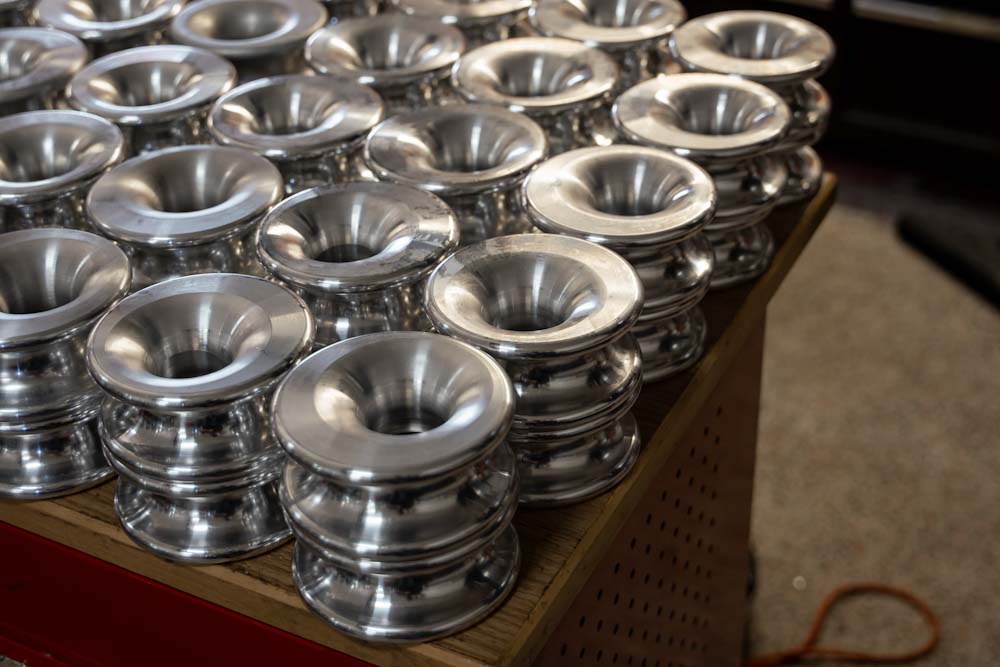
We have high standards for CNC turning
Our CNC processes and machines are top-of-the-line and professional grade. Each machine is operated by our expert technicians and operators.
Every order and part is held to our high Quality Standards. If you are unsatisfied with the results of your CNC project, please contact us and we will work with you to make it right.
More resources for CNC turning
Learn more about CNC turning and the different material options we offer.
Our other CNC machining process
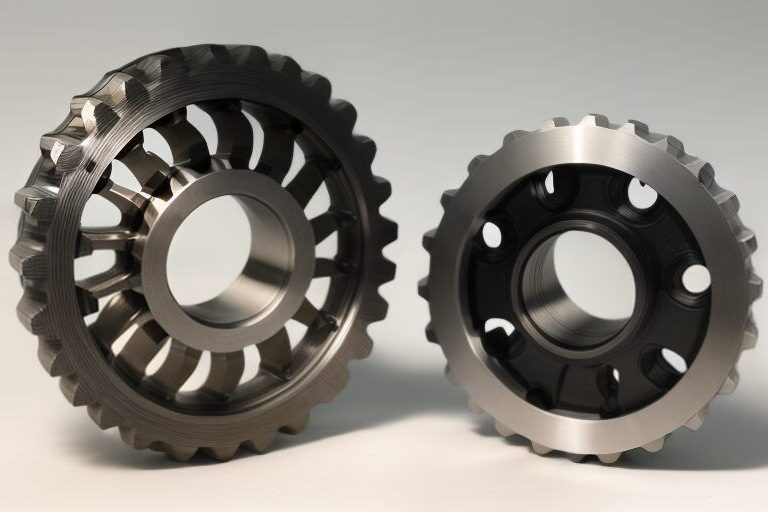
CNC milling
Another option for CNC projects is the milling process. This kind of process allows for more flexible part design.
